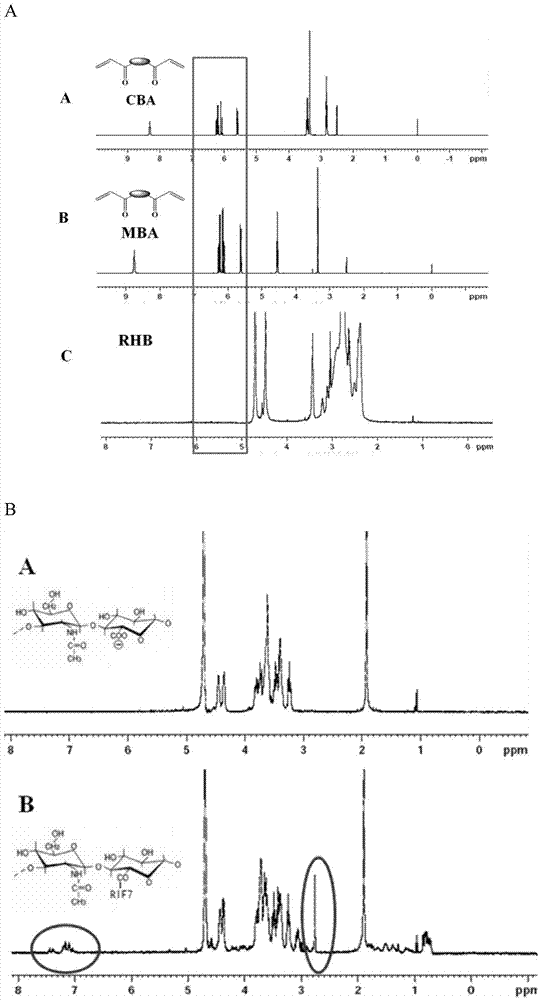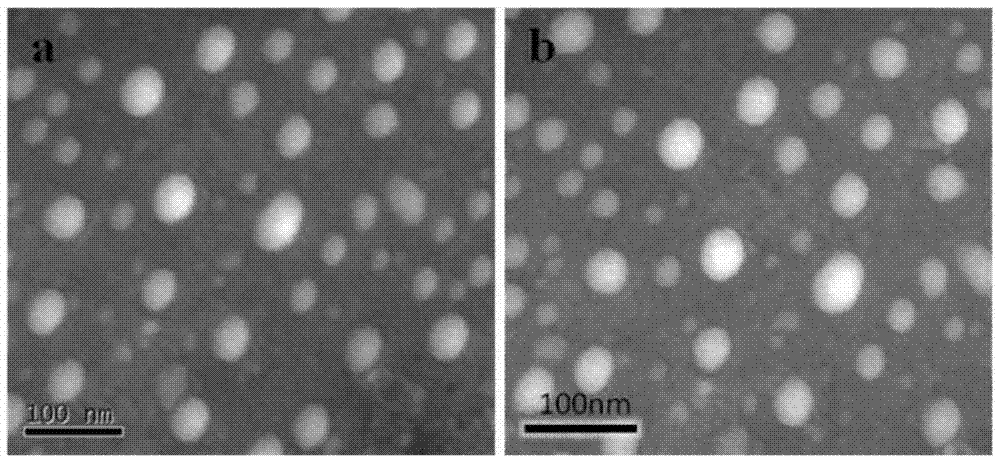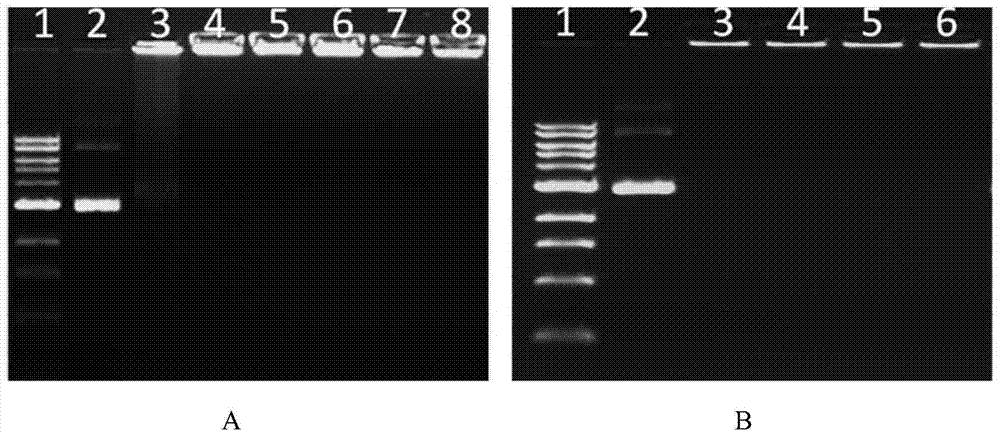Double-targeted ternary complex nucleic acid transfer and release system and preparation method thereof
A ternary compound and compound technology, which is applied in the field of biomedicine, can solve the problems of low serum stability, high toxicity, and body toxicity.
- Summary
- Abstract
- Description
- Claims
- Application Information
AI Technical Summary
Problems solved by technology
Method used
Image
Examples
Embodiment 1
[0051] Embodiment 1: the method for synthesizing dendritic cationic polymer polyaminoamine (RHB)
[0052] Accurately weigh CBA (0.260g, 1.0mmol), MBA (0.308g, 2.0mmol), add AEPZ (0.193g, 1.5mmol) methanol / water mixture (3.5mL, 7 / 3, v / v) In a round bottom flask, magnetically stirred, protected by N2, protected from light, reacted in an oil bath at 50°C for 3 days to obtain a viscous solution. Add a small amount of 4-amino-1-butanol, and continue stirring at 50°C for 12h. The product solution was dialyzed against HCL aqueous solution (pH=3) for 1 d, distilled water for 2 d, freeze-dried, and weighed to obtain RHB.
Embodiment 2
[0053] Embodiment 2: the method for synthesizing RIF7 modified HA (RIF7-HA)
[0054]Accurately weigh HA (7.5kD, 50mg, 0.005mmol) and dissolve it in PBS (5ml, pH7.4) with magnetic stirring until clarification, add EDC·HCL (20mg, 0.1mmol) and HOBT (15mg, 0.1mmol), and continue stirring for 2h . Dissolve 11.8 mg of RIF7-related peptide in 5 ml of triple-distilled water and add dropwise to the activated HA solution, add an appropriate amount of NaCl, and add 140 μl of N-methylmorpholine to adjust the pH to 7.4. Stir overnight, dialyze with a dialysis bag with a molecular weight of 3500, remove unreacted polypeptide, and lyophilize.
Embodiment 3
[0055] Embodiment 3: the method for preparing RHB / DNA complex nanoparticle
[0056] Cationic polymer RHB and DNA self-assemble to form nanoparticles; prepare 1 μg / μl polymer RHB aqueous solution and 1 μg / μl DNA aqueous solution respectively, and take corresponding volume of mother solution according to the mass ratio (w / w) of polymer RHB to DNA Disperse in PBS with pH 7.4, then mix with an equal volume of DNA solution, vortex for 5 s and incubate at room temperature for 5 min to prepare RHB / DNA binary complex nanoparticles.
PUM
| Property | Measurement | Unit |
|---|---|---|
| molecular weight | aaaaa | aaaaa |
Abstract
Description
Claims
Application Information
 Login to View More
Login to View More - R&D
- Intellectual Property
- Life Sciences
- Materials
- Tech Scout
- Unparalleled Data Quality
- Higher Quality Content
- 60% Fewer Hallucinations
Browse by: Latest US Patents, China's latest patents, Technical Efficacy Thesaurus, Application Domain, Technology Topic, Popular Technical Reports.
© 2025 PatSnap. All rights reserved.Legal|Privacy policy|Modern Slavery Act Transparency Statement|Sitemap|About US| Contact US: help@patsnap.com



